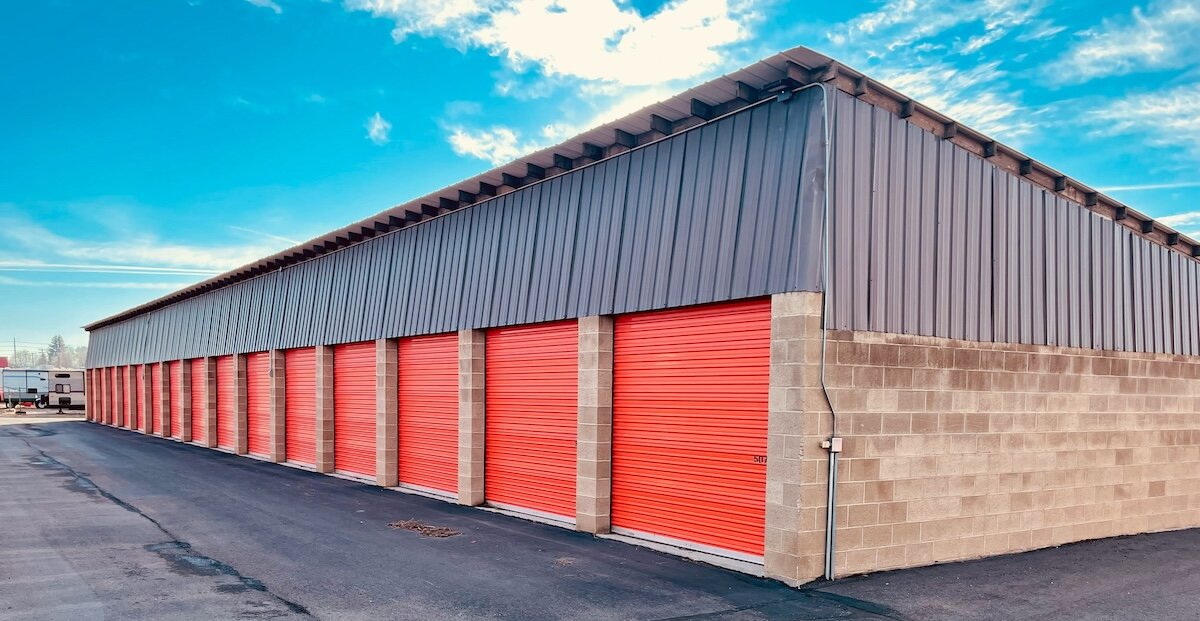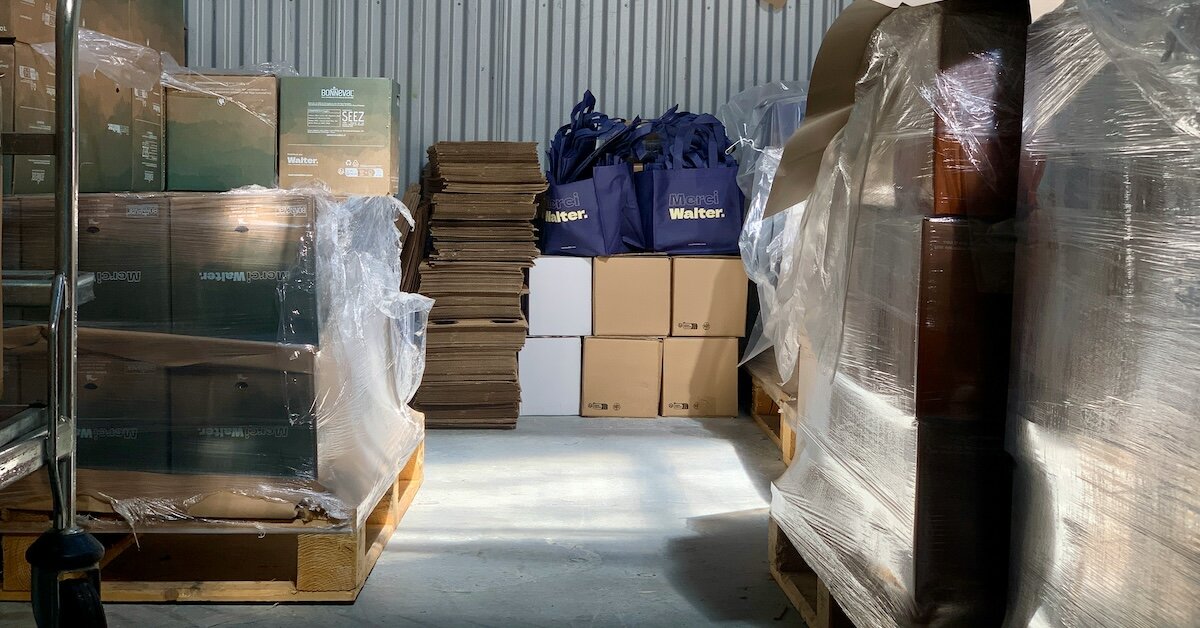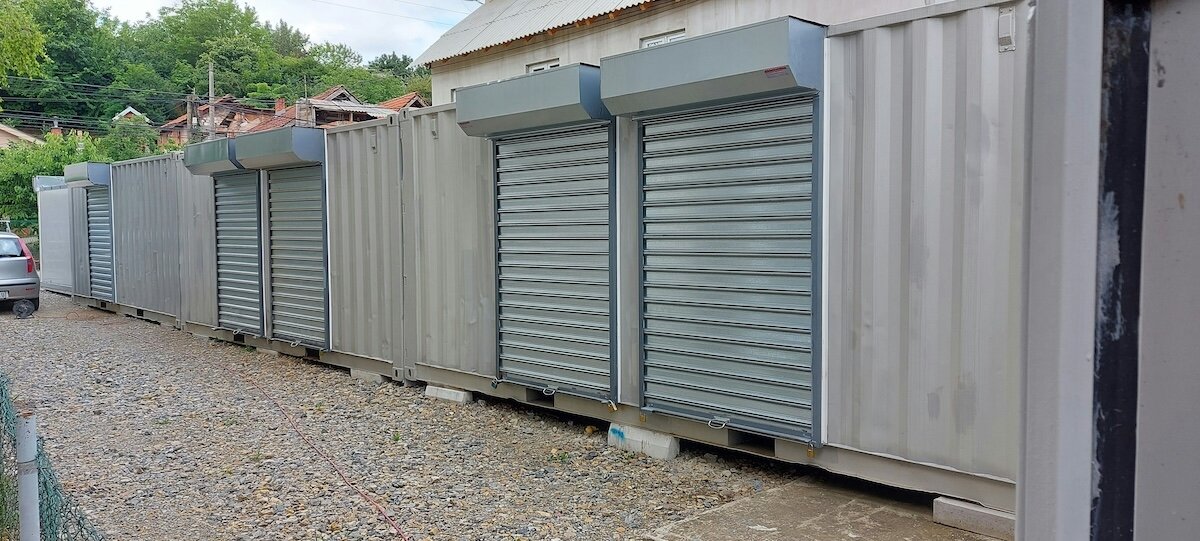The State of Self Storage Investing in 2024

Shanti Ryle
April 9, 2024

One commercial real estate asset class is capturing the attention of investors more than ever before: self storage.
Self storage, once considered a niche or secondary investment option, is emerging as a powerhouse in the real estate market, offering unique advantages and opportunities.
Self storage's resilience during economic fluctuations, coupled with evolving demand driven by urbanization, downsizing, and a surge in e-commerce, positions it as an attractive choice for those looking to diversify their investment portfolios with steady yields and low operating costs.
This article explores the reasons behind its rise, the performance indicators that matter, and how to navigate the investment landscape, equipping investors with the knowledge to make informed decisions in a dynamic and promising market.
Why Invest in Self-Storage?
Self-storage properties can offer investors a blend of stability and opportunity. Here are some of the pros and cons to consider before investing in self-storage:
Pros
- Reliable cash flow: Self-storage facilities have demonstrated an ability to generate steady rent income, maintaining resilience even when other real estate segments face challenges.
- Flexible leasing and pricing: The typical month-to-month leasing model in self-storage allows the flexibility to adjust rental rates for new tenants based on current market conditions.
- Recession resilient characteristics: Historically, self storage has demonstrated resilience during economic downturns. Its performance is less tied to economic cycles than other real estate types, making it an attractive option for those seeking stability in uncertain times.
- Lower development, maintenance, and operational costs: Compared to other commercial real estate investments, self-storage facilities are less expensive to develop, require less maintenance, and have lower operating costs.
Cons
- Market saturation risks in some areas: Despite high demand overall, certain regions may experience saturation, leading to increased competition and pressure on rental rates, which can impact profitability.
- Impact of economic cycles on consumer demand: While self-storage is generally resilient, severe economic downturns can still affect consumer spending habits, potentially reducing the demand for storage units.
- Capital funding challenges: Accessing capital for purchasing or developing self-storage facilities can pose a significant hurdle, especially for new entrants. With the rising interest rates and inflation, financing these investments becomes more expensive, potentially impacting the overall return on investment.
- Sensitivity to location: The success of a self-storage facility can be highly sensitive to its location. Choosing a less-than-ideal location without a thorough market demand analysis can lead to underperformance in occupancy rates and revenue.

Self Storage Industry Trends
Despite recent challenges, such as rising interest rates and shifts in consumer behavior, the self storage industry's performance metrics offer a positive view of its health and potential forecasts, according to information from Matthews Real Estate Investment Services and the U.S. Census Bureau.
Growing Number of Users
In 2022, the self storage industry witnessed a minor drop in rent growth and occupancy rates. This shift was driven by macroeconomic factors, including slower home sales and changing migration patterns, dampening demand.
The street rate for non-climate-controlled units decreased slightly to $128, a 2% drop year-over-year, while climate-controlled units averaged $144, down by 0.8%. Nevertheless, the sector's ability to attract new users remained strong, with the number of people utilizing self-storage climbing to 14.5 million, an increase of nearly a million users since 2020.
Financial Performance
The financial performance of self storage has seen rising transaction volumes. From 2020 to 2021, sales volume for self-storage properties surged 180%, from $8.4 billion to $23.9 billion, highlighting investor confidence and the sector's attractiveness.
Although 2022 experienced a slowdown influenced by broader economic conditions, the first three quarters of 2023 saw a combined sales volume of $14.2 billion, with a significant portion occurring in Q3 due to mergers and acquisitions.
Economic Resilience
The self storage industry demonstrated robustness during the COVID-19 pandemic and also showed a positive return of 5% during the Great Recession in 2008, setting it apart from other real estate investment trusts (REITs) that faced losses.
In particular, the pandemic created unique demand drivers, such as the need for storage space due to remote work and commercial office space reorganization. This resilience, combined with an average occupancy rates over the last three years, explains the growing appeal of self storage as an asset class.

The Growth of the Self Storage Industry in 2024
The resilience of self storage as an asset class has been thoroughly tested and proven, particularly through the unpredictable market cycles of 2020-2022, with high and increasing net operating income (NOI) margins.
Despite facing a tight lending environment and the high cost of capital, self storage unit sales volume impressively rose to nearly $3.4 billion in 2023. However, new construction has been tempered by supply chain disruptions and rising costs, with completions expected to reach around 42.5 million rentable square feet by 2026.
Looking ahead, lenders are likely to allocate more money to core urban, infill, and stable assets, potentially creating acquisition opportunities as some owners reevaluate their positions.
The Sun Belt region, in particular, continues to attract significant investment activity, supported by population and job growth. This region, along with secondary and tertiary markets, offers appealing prospects for both large investors and small-scale entrants despite the potential for increased competition.
As we move into 2024 and beyond, the self storage industry is poised for more activity and potentially better pricing. However, investors should temper their expectations, acknowledging that the explosive growth seen during the pandemic might not be replicated.
Instead, the focus will likely shift towards strategic expansion, selective acquisitions, and leveraging technology to meet evolving consumer demands.

How to Invest in Self-Storage
With its reputation for resilience during economic downturns, low maintenance requirements, and steady passive income, it's no wonder that interest in this sector is growing. For those considering an investment in self-storage, understanding the various pathways to entry and key considerations is crucial for success.
Ways to Invest in Self-Storage Property
- Real Estate Investment Trusts (REITs): For those looking for a more hands-off investment, self storage REITs offer a passive means to tap into this market. These trusts pool funds from investors to buy, manage, and operate storage facilities, offer high profit margins and returns on investment without the need for direct management.
- Buying an existing facility: Acquiring established self storage facilities allows investors to generate rental income immediately. This option can be more costly upfront but eliminates the waiting period associated with construction and initial leasing.
- Building a new facility: Investors with a vision for design and layout and those with industry expertise may opt to build self storage facilities. This route provides control over the project but requires a significant time investment to achieve high occupancy rates.
- Investing in a syndicate: Pooling funds with other investors to collectively invest in self storage units is another viable option. This approach reduces individual risk and capital requirements, making it an attractive choice for those with limited funds.
Key Considerations for Successful Investment
- Choosing the right location: The success of self storage facilities heavily depends on its location. Factors such as population growth, local demand, and competition should inform the decision-making process.
- Understanding the target customer: Knowing who the customers are (residential, commercial, students, military personnel) and what they need is crucial for tailoring targeted offerings and marketing strategies.
- Mitigating risks: Although self-storage is considered low-risk, potential investors should be aware of challenges such as market saturation and the need for active management. Investing in locations with less competition and ensuring adequate security and amenities can help mitigate these risks.
- Facility classification: Self storage facilities are categorized into three classes (Class A, Class B, and Class C) based on age, amenities, location, and other factors. Understanding these distinctions can guide investment decisions and expectations regarding returns.

Self Storage Potential Profit
The self storage industry continues to capture the attention of investors.
Its resilience to economic downturns, coupled with lower operational costs and evolving consumer behaviors, underscores the compelling nature of self storage units as a strategic investment choice. Its unique blend of stability and growth potential stands out in the dynamic landscape of commercial real estate.
Before investing, it's important to weigh the opportunities and challenges inherent in the self storage market. The path to successful investment in this sector involves careful consideration of market trends, technological advancements, and consumers' ever-changing needs.
Discover the perfect self storage investment opportunity on Crexi, where you can explore a wide range of properties available for sale and connect with brokers who specialize in self storage investments.
Visit Crexi today to take the first step towards expanding your investment portfolio.









